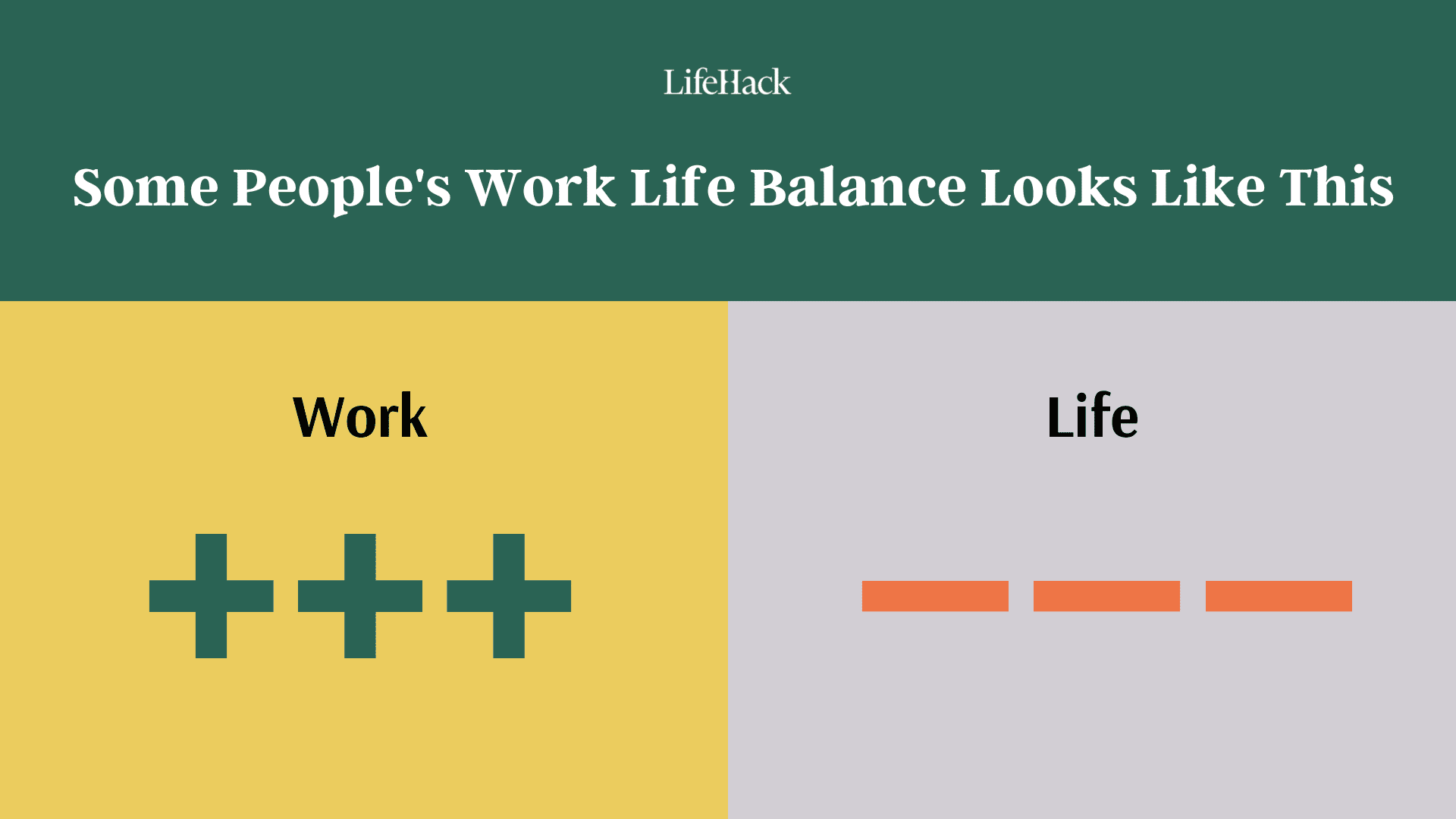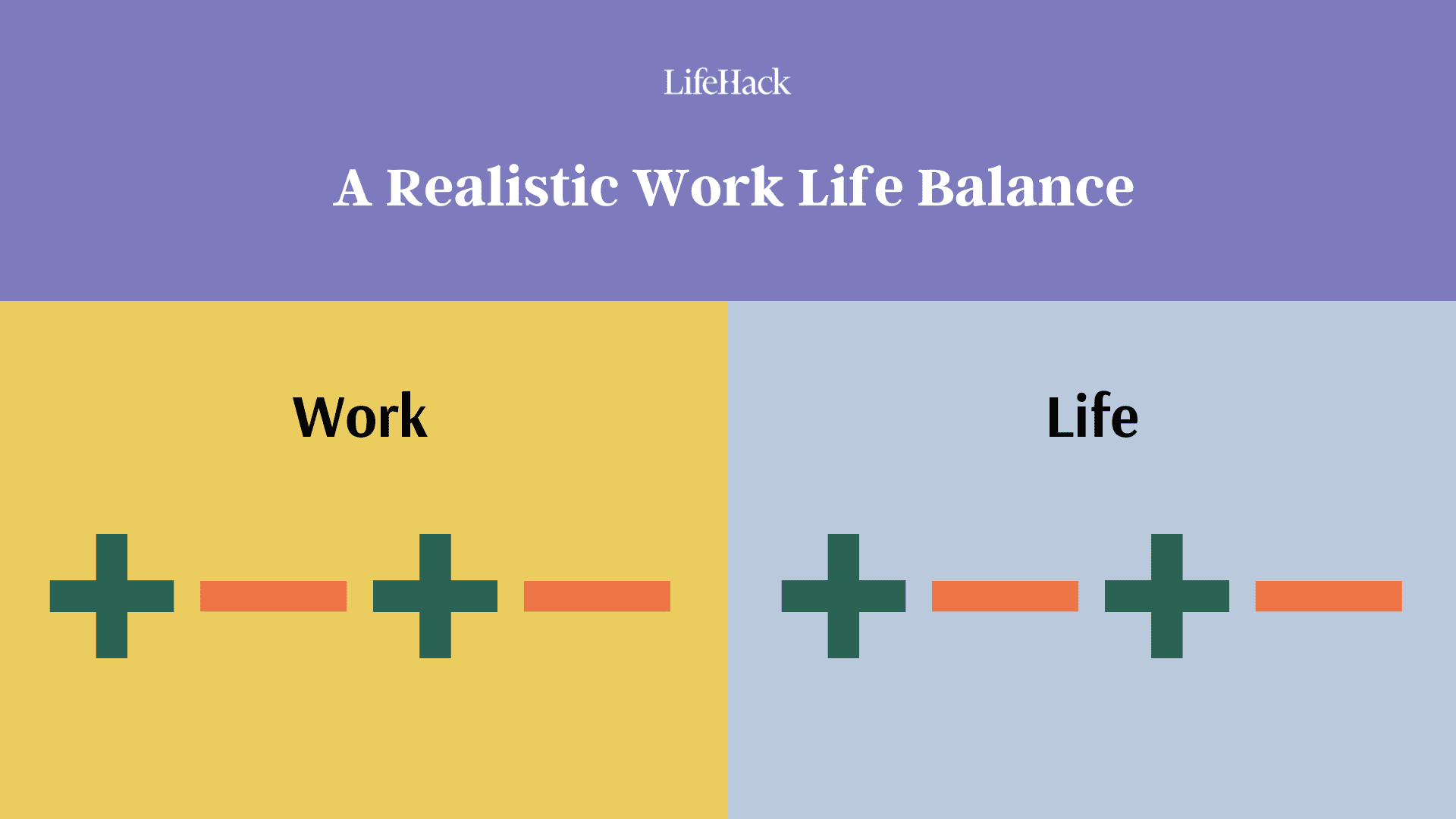Are you struggling to find a healthy work-life balance in the era of remote work? You’re not alone. With blurred boundaries and increased work hours, achieving harmony between your professional and personal life can feel like an uphill battle.
According to a survey conducted by Fingerprint of Success:
- 65% of people admit that now that they work remotely, they are working longer hours than ever before.[1]
- 66% of full-time employees in the United States do not strongly believe they have work-life balance,
- and 51% of people say they have missed important life events due to insufficient work-life balance.
But it doesn’t have to be this way. By implementing the right strategies and making conscious choices, you can master work-life balance and thrive in both your career and personal life.
In this article, we’ll guide you through the process of achieving work-life balance in the remote work era. You’ll learn practical tips and insights to help you take control of your time, reduce stress, and unlock your full potential.
Table of Contents
Understanding Work-Life Balance
Before we dive into strategies for achieving work-life balance, let’s take a moment to understand what it really means. Work-life balance is the state of harmony between your professional and personal life. It’s about finding a way to allocate your time and energy in a way that allows you to meet the demands of your job while also having time for the things that matter most to you outside of work.
But here’s the thing: work-life balance doesn’t mean a perfect 50/50 split between work and life. It’s not about rigidly dividing your time and attention. Instead, it’s about finding a balance that works for you, based on your unique needs, preferences, and priorities.
Common Myths about Work-Life Balance:
Myth 1: Work and life are separate entities that cannot coexist harmoniously.
Reality: Work and life are interconnected, and it’s possible to find fulfillment in both areas.
Myth 2: Achieving work-life balance means sacrificing success in your career.
Reality: A healthy work-life balance can actually enhance your productivity and performance at work.
Myth 3: Work-life balance is a one-time achievement.
Reality: Work-life balance is an ongoing process that requires regular evaluation and adjustment.
Myth 4: There’s a one-size-fits-all approach to work-life balance.
Reality: What works for one person may not work for another. It’s important to find a balance that aligns with your values and goals.
By understanding what work-life balance truly means and dispelling these common myths, you can approach the process of achieving balance with a clearer mindset. Remember, work-life balance is a personal journey, and what works for you may look different from what works for someone else.
Navigating Work-Life Balance in the Remote Work Era
The shift to remote work has brought about a new set of challenges and opportunities when it comes to work-life balance. On one hand, remote work offers greater flexibility and autonomy. You can often set your own schedule, work from the comfort of your own home, and save time on commuting. On the other hand, the lines between work and personal life can easily become blurred, leading to longer work hours and increased stress.
Challenges of Remote Work:
- Blurred boundaries: When your home becomes your office, it can be difficult to mentally switch off from work mode.
- Longer work hours: Without the clear end to the workday that comes with leaving the office, it’s easy to find yourself working late into the evening.
- Isolation: Remote work can be isolating, leading to feelings of loneliness and disconnection from colleagues.
Opportunities of Remote Work:
- Flexibility: Remote work often allows for a more flexible schedule, enabling you to structure your day in a way that works best for you.
- Reduced commute time: Without the need to commute, you can save time and use it for other activities that contribute to your work-life balance.
- Improved autonomy: Remote work can give you more control over your work environment and processes.
Tips for Managing Work-Life Balance in a Remote Setting:
- Set clear boundaries: Establish a dedicated workspace and set clear start and end times for your workday.
- Communicate expectations: Make sure your colleagues and managers understand your working hours and when you’re available.
- Take breaks: Step away from your workspace regularly to recharge and avoid burnout.
- Prioritize self-care: Make time for activities that promote your physical and mental well-being, such as exercise, hobbies, and socializing.
- Disconnect when necessary: When your workday is over, make a conscious effort to disconnect from work-related tasks and technology.
By understanding the unique challenges and opportunities of remote work, you can develop strategies to navigate work-life balance in this new era. It’s all about finding what works best for you and making a conscious effort to prioritize both your professional and personal life.
Why Is a Life Balance Important?
Work-life imbalance has been shown in numerous studies to significantly harm employee performance and productivity.[2] The negative impact even extends beyond work performance and productivity to other aspects of life.[3]
Obesity, cardiovascular disease,[4] and poor sleep quality can all be caused by a lack of life balance.
An unbalanced life can increase the risk of mental health problems such as depression and anxiety.[5] It can also lead to burnout, which is characterized by physical, mental, and emotional exhaustion.[6]
Work-life balance issues can lead to strained relationships with family and friends. They may not have enough time to spend with loved ones, or they may be too tired or stressed to engage in meaningful interactions.[7]
Moreover, people feel as though they are missing out on other significant aspects of life when work consumes their personal lives. This can result in a loss of motivation and a sense of purpose in life.
People who have a healthy life balance, on the other hand, experience less stress, which leads to better physical and mental health. They are also more motivated and have stronger interpersonal relationships.
Assessing Your Current Work-Life Balance
Before you can make changes to improve your work-life balance, it’s important to take a step back and assess your current situation. By understanding where you stand, you can identify areas that need improvement and develop a plan of action.
Signs of an Unhealthy Work-Life Balance:
- Constantly working long hours
- Feeling guilty or anxious when not working
- Neglecting personal relationships and activities
- Experiencing physical or mental exhaustion
- Struggling to disconnect from work during off-hours
If you’re experiencing any of these signs, it’s a clear indication that your work-life balance needs attention. But how do you get a more precise understanding of your current situation?
Self-Assessment Tools and Techniques:
- Keep a time diary: Track how you spend your time over the course of a week. This can help you identify where your time is being spent and where you may be able to make adjustments.
- Assess your priorities: Make a list of your personal and professional priorities. Are you dedicating enough time and energy to the things that matter most to you?
- Evaluate your job satisfaction: Consider how fulfilled you feel in your current job. Are there aspects of your work that are contributing to an unhealthy work-life balance?
- Seek feedback: Ask trusted colleagues, friends, or family members for their honest assessment of your work-life balance. Sometimes an outside perspective can provide valuable insights.
For an even more in-depth audit, take LifeHack’s Time Assessment for free and get a customized report on your time/life balance.
Identifying Areas for Improvement:
Once you’ve assessed your current situation, it’s time to identify specific areas where you can make changes. Some questions to consider:
- Are there tasks or responsibilities that you can delegate or eliminate?
- Can you set clearer boundaries between work and personal time?
- Are there changes you can make to your work schedule to better accommodate your personal life?
- Can you incorporate more activities that promote your physical and mental well-being?
By taking a proactive approach to assessing your work-life balance, you can gain a clearer understanding of where you are and where you want to be. Armed with this knowledge, you can start making targeted changes to improve your overall well-being and create a more harmonious relationship between your work and personal life.
How to Achieve a Realistic Work-Life Balance
Those who attempt to achieve work-life balance solely by dividing their time and driving a sharp wedge between work mode and life mode are unintentionally dividing themselves.
When people juxtapose ‘work’ and ‘life,’ they unconsciously think in terms of ‘work’ versus ‘life,’ and are constantly forced to choose one over the other. In this framework, a gain on one side is always a loss on the other.
As a result, people begin to see ‘work’ when they are not living. ‘Work’ is viewed as a necessary evil that must be endured until it is time to turn it off. But there is no balance if you encode everything related to work as negativity and suffering while your ‘life’ strains under unrealistic expectations of enjoyment.
Rebalancing work and life is possible by seeking a new and enjoyable job to a certain extent. However, no job is perfect. There will always be tedious aspects to any job. If you don’t change the old framework, you’ll soon find yourself on the same ‘life’ versus ‘work’ see-saw.
The true goal is to redistribute the positive (+) and negative (-) evenly across life.
Most people try to make everything positive outside of work to compensate for the negativity at work like this:
If everything is negative at work and everything is positive when the work mode is turned off, work performance will suffer, creating even more negativity. People will rely heavily on their off-mode life for happiness, but they will not be truly happy because they are not dealing with problems at work.
Meanwhile, some make an effort to bring positivity into their workplace. Their work-life balance may look like this:
Unfortunately, if these people remain stuck in the old on/off framework, all of their negative emotions will be transferred to their off-mode self, and their relationships and health will suffer.
I used to be one of these people.
I gave my all to the work I do because I loved it. I expanded my business about 8 years ago, but because I spent almost all of my energy on my work, I had no time to take care of myself.
I couldn’t sleep well, was frequently stressed, and suffered from back pain as a result of the stress. These health issues began to interfere with my daily life and ability to concentrate at work.
On the other hand, very few people are fortunate enough to experience happiness on both sides of the equation. Their work-life balance looks like this:
If you are fortunate enough to experience positivity from both sides, congratulations! You make up less than 5% of the population.
But if you’re in the other 95% of people, don’t miss these steps to get a realistic work-life balance:
Recover the Sense of a Unified Self
The solution is to regain a sense of unity within oneself. When you do, you will deconstruct the competing work/life binary and stop unconsciously labeling work as “suffering” and life as “enjoyment.” Positive energy will begin to flow effortlessly and smoothly throughout your life.
To regain a sense of unity, ask yourself: Why do I do what I do in life and at work?
Your response to this question forms your blueprint for a unified self, charged with meaning that is directly related to who you are and what you care about.
Use your blueprint to examine your work, leisure, and relationships to see if they are in sync.
This new framework is called ‘alignment,’ not ‘balance.’ This will reveal to you several things:
- Some aspects of your work are not suffering: Look again, and you’ll notice many positive aspects that reflect your interests. For example, you may value creativity and recognize that you have opportunities to demonstrate it every day at work.
- What you care about at work is the same as what you care about in life: For example, you may value friendship in your life and demonstrate this value to your coworkers. Your values are present in all of your interactions and serve to unite you.
- What you do at work and what you do in your personal life complement and enhance one another: For example, the same generosity you show your friends can help you build good client relationships at work. Your creativity at work can be applied to overcome obstacles in your personal life.
As a result, you will never need to use the on/off work model again because you will always act in accordance with what you truly value. Your positive energy will flow consistently through all of your states of being in a perpetual positive feedback loop.
So for me, after realizing how much I needed to change my daily habits, I began to reprioritize my life demands and reorganize my schedule to ensure that I had enough time dedicated to self-care and exercise.
I gradually began to strike a more realistic work-life balance as follows:
Your new perspective on balance and alignment is an inner transformation that can empower you regardless of your current circumstances.
For example, it could reveal your dissatisfaction with your current job. You can then use your blueprint to determine what is causing the negativity; perhaps something isn’t aligned with what you value. This can also be used to remind yourself why you’re doing what you’re doing, or encourage you to make a change.
If you’re a workaholic, your blueprint may reveal that what you previously dismissed as ‘off-mode’ (relaxing, having fun, pursuing a passion, spending time with family and friends) contains a wealth of values that support – and even enhance – a well-rounded working life.
The Role of Employers in Promoting Work-Life Balance
While individuals have a significant role to play in achieving work-life balance, employers also have a crucial responsibility in creating an environment that supports and encourages this balance. By prioritizing employee well-being, companies can benefit from increased productivity, job satisfaction, and retention rates.
The Business Case for Supporting Employee Work-Life Balance:
- Improved productivity: Employees with a healthy work-life balance are more focused, engaged, and productive.
- Reduced absenteeism and turnover: When employees feel supported in their work-life balance, they are less likely to experience burnout and more likely to remain with the company.
- Enhanced reputation and attraction of talent: Companies known for promoting work-life balance are more attractive to top talent and can build a positive reputation in their industry.
Examples of Effective Workplace Policies and Initiatives:
- Flexible work arrangements: Offer options such as remote work, flexible hours, or compressed workweeks to give employees more control over their schedules.
Example: Implement a policy that allows employees to work from home two days a week or adjust their start and end times based on personal needs. - Paid time off and leave policies: Provide generous vacation time, sick leave, and parental leave to ensure employees have adequate time to rest, recharge, and attend to personal matters.
Example: Offer unlimited PTO or extend parental leave beyond the legal requirements to show support for employees’ personal lives. - Employee wellness programs: Invest in initiatives that promote physical and mental well-being, such as gym memberships, stress management workshops, or mindfulness training.
Example: Provide a monthly wellness stipend that employees can use for fitness classes, therapy sessions, or other well-being activities.
- Workload management and resources: Ensure that employees have the necessary resources, support, and realistic workloads to prevent overwork and burnout.
Example: Regularly assess employee workloads and hire additional staff or redistribute tasks as needed to maintain a sustainable work environment.
Fostering a Culture of Work-Life Balance:
Beyond specific policies and initiatives, employers can foster a culture that values and promotes work-life balance. This involves:
- Leading by example: Managers and leaders should model healthy work-life balance behaviors and encourage their teams to do the same.
- Open communication: Encourage open dialogue about work-life balance and create safe spaces for employees to discuss their needs and concerns.
- Celebrating balance: Recognize and reward employees who successfully manage their work-life balance and contribute to a positive workplace culture.
Example: Highlight employee success stories in company newsletters or meetings to show that work-life balance is valued and achievable.
By taking an active role in promoting work-life balance, employers can create a supportive and empowering workplace culture that benefits both employees and the organization as a whole. When companies prioritize the well-being of their staff, they foster a more engaged, productive, and loyal workforce.
Overcoming Challenges and Setbacks
Despite your best efforts to achieve a healthy work-life balance, challenges and setbacks are inevitable. Life can be unpredictable, and circumstances can change, leading to periods of stress and imbalance. The key is to develop resilience and strategies to navigate these challenges effectively.
Dealing with Work-Life Conflict and Stress:
- Identify the source: When faced with work-life conflict or stress, take a step back and identify the root cause. Is it a specific project, a challenging relationship, or an overwhelming workload?
- Communicate and negotiate: Once you’ve identified the source, communicate your concerns and needs to the relevant parties, such as your manager, colleagues, or family members. Work together to find solutions or compromises that can alleviate the conflict or stress.
- Practice stress management techniques: Engage in activities that help you manage stress, such as deep breathing, meditation, exercise, or journaling. Find what works best for you and make these techniques a regular part of your routine.
Example: If you’re feeling overwhelmed by a tight deadline, discuss the situation with your manager and see if the deadline can be adjusted or if additional resources can be provided to support you.
Adapting to Changing Circumstances and Priorities:
- Regularly reassess your work-life balance: As your life evolves, your work-life balance needs may change. Periodically evaluate your situation and adjust your strategies accordingly.
- Be flexible and adaptable: Embrace change and be open to adjusting your approach to work-life balance as needed. What worked for you in the past may not be effective in new circumstances.
- Prioritize and let go: When faced with changing priorities, focus on what matters most and be willing to let go of less essential tasks or commitments.
Example: If you’re transitioning to a new role or taking on additional responsibilities at work, you may need to temporarily adjust your personal commitments or delegate some tasks to maintain balance.
Seeking Support and Resources:
- Reach out to your support network: Lean on family, friends, or colleagues for emotional support and practical assistance when facing challenges.
- Utilize employee assistance programs: Many companies offer employee assistance programs (EAPs) that provide confidential counseling and resources for managing work-life balance and stress.
- Consider professional help: If you’re struggling to cope with work-life challenges or experiencing prolonged stress, consider seeking the guidance of a mental health professional or career coach.
Example: If you’re having difficulty managing stress on your own, reach out to your company’s EAP or schedule an appointment with a therapist who specializes in work-life balance issues.
Remember, setbacks and challenges are a normal part of the journey toward achieving a healthy work-life balance. By developing resilience, adaptability, and a strong support system, you can navigate these obstacles and continue making progress toward your goals.
Conclusion
Achieving a healthy life balance does not entail striving for perfection or attempting to balance all aspects of life equally. Rather, it is about figuring out how to balance work and personal life in a way that feels fulfilling and meaningful. Prioritizing important relationships, maintaining physical and mental health, and engaging in hobbies and leisure activities are all examples of this.
You can achieve a more balanced and fulfilling life by taking a more realistic approach to work-life balance and recognizing the value of work and personal life integration. This may require some changes to work schedules or personal habits, but the benefits of achieving a healthy life balance are well worth the effort.
To know how balanced your life is, you can take the Time Assessment here for free and get a personalized report.
Reference
| [1] | ^ | Fingerprint for Success: 35 critical work-life balance stats everyone should know |
| [2] | ^ | International Business Research: Impact of Work-Life Balance, Happiness at Work, on Employee Performance |
| [3] | ^ | Biomed Res Int.: Long Hours’ Effects on Work-Life Balance and Satisfaction |
| [4] | ^ | The Lancet Journal: Long working hours and risk of coronary heart disease and stroke: a systematic review and meta-analysis of published and unpublished data for 603 838 individuals |
| [5] | ^ | Front Psychol.: The Mental Health Consequences of Work-Life and Life-Work Conflicts for STEM Postdoctoral Trainees |
| [6] | ^ | Success in Academic Surgery (pp.219-234): Work–Life Balance and Burnout |
| [7] | ^ | Int J Environ Res Public Health.: Work–Life Balance: Weighing the Importance of Work–Family and Work–Health Balance |
















































